Information
At Abbott's Gutters and Plumbing, we understand the importance of a properly functioning gutter system for your home in Dawsonville, Georgia. Explore the different types of gutters we offer and how we can help you make the best choice for your needs.
Understanding Gutter Materials
Choosing the right gutter material is crucial for longevity and performance. Here's a breakdown of the most common materials we work with at Abbott's Gutters and Plumbing:
-
Aluminum Gutters: A popular choice due to their affordability, light weight, and resistance to rust.
-
Vinyl Gutters: A budget-friendly option, easy to install, and resistant to rust. However, they can become brittle in extreme temperatures.
-
Copper Gutters: Known for their durability and aesthetic appeal, developing a unique patina over time. They are generally more expensive and require professional installation, says Hover, Inc..
-
Steel Gutters: Durable and sturdy, suitable for heavy rainfall areas. They require proper maintenance to prevent rust.
-
Zinc Gutters: Known for their longevity and unique appearance.
Exploring Different Gutter Styles
Beyond the standard options, Abbott's Gutters and Plumbing offers a variety of gutter styles to suit different aesthetic preferences and functional needs:
-
K-Style Gutters: These are the most popular type, characterized by their decorative front that often mimics crown molding. They are known for their strength and ability to handle large volumes of water.
-
Half-Round Gutters: These are U-shaped and known for their classic, simple design. They are generally easier to clean than K-style gutters but may not handle as much water.
-
Fascia Gutters: These gutters are designed to fit directly against the fascia board, offering a clean, integrated look. They can be more difficult to access for cleaning and maintenance.
-
Box Gutters: These are square or rectangular in shape and often used in commercial or larger residential applications. They are known for their capacity to handle large amounts of water.
-
Seamless Gutters: These are custom-made on-site to fit a specific roofline, minimizing joints and potential leak points. They are generally more expensive than sectional gutters but offer a cleaner look and can be more durable, according to ARS Roofing & Gutters.
-
Sectional Gutters: These are pre-cut lengths that are joined together during installation. They are generally more affordable and easier to install, making them popular for DIY projects.

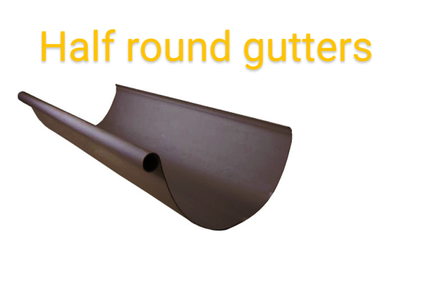
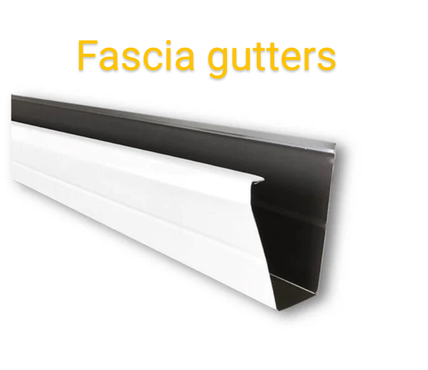
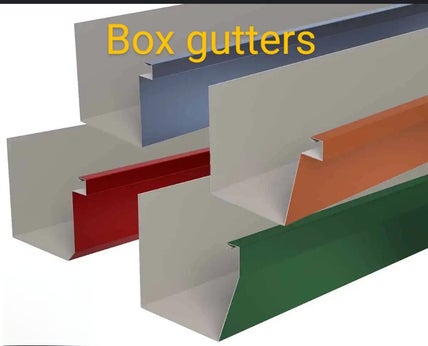
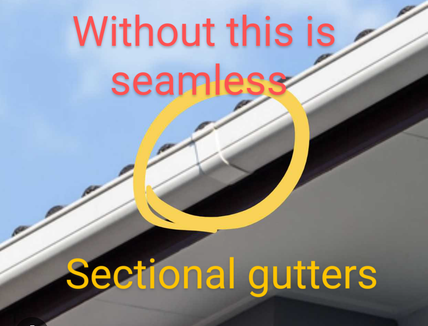
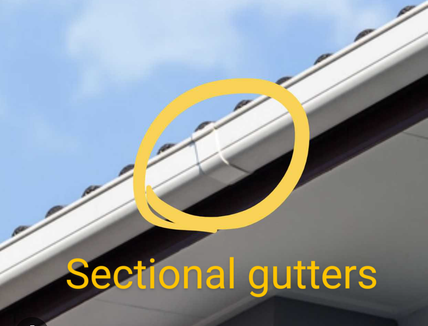
Knowing when to replace your gutters is crucial to prevent water damage to your home. Here are some signs that indicate you need new gutters from Abbott's Gutters and Plumbing, rather than just a cleaning or repair:
Sagging or Pulling Away: Gutters should be level and securely attached to the fascia board. If they are drooping, separating from the house, or have nails or screws falling out, they are likely failing.
Overflowing Gutters: Water spilling over the edges during rainfall is a clear sign of a blockage or improper slope.
Leaking Gutters: Water dripping from the gutters or downspouts in places other than the designated outlets indicates a leak.
Rust or Cracks: Rust, especially in metal gutters, or visible cracks and splits are indicators of wear and tear and potential for failure.
Peeling Paint: Peeling paint on the gutters or surrounding siding suggests water damage and potential leaks.
Foundation Issues: If you notice cracks in your foundation or water pooling around the foundation after rain, it could be due to inadequate gutter performance.
Water Damage: Water stains, discoloration, or mold on the siding, walls, or ceilings around the gutters are signs of leaks.
Plant Growth: Plants growing in your gutters indicate standing water, which is a sign of poor drainage and potential blockages.
Unexplained Nails or Screws: If you find nails or screws that appear to be from the gutter system, but you don't know where they came from, it could be a sign of the gutter system being loose or coming apart
Recognizing When You Need New Gutters
Addressing Common Gutter Misconceptions
At Abbott's Gutters and Plumbing, we aim to educate our customers. Here are some common misconceptions about gutters and how we address them:
- Myth: Gutters only need cleaning once a year. Reality: The frequency of gutter cleaning depends on factors like trees near the home and weather conditions. In areas with heavy foliage, more frequent cleaning (at least twice a year) is recommended to prevent clogs and water damage. Addressing it: We emphasize the importance of regular inspection and cleaning based on the home's surroundings and local weather. We recommend a biannual cleaning schedule (spring and fall) as a general guideline, with more frequent cleanings as needed, according to AF Aluminum.
- Myth: Gutter guards eliminate the need for cleaning. Reality: While gutter guards significantly reduce the amount of debris entering the gutters, they don't completely eliminate the need for cleaning. Smaller debris like pine needles and seeds can still accumulate and cause blockages. Addressing it: We explain that gutter guards are a valuable investment in reducing maintenance but don't negate the need for occasional inspections and cleaning, particularly to remove debris that collects on top of the guards.
- Myth: Gutters don't work in severe storms. Reality: Gutters are designed to handle typical rainfall, but even well-maintained systems can experience temporary overflow during intense downpours. Addressing it: We clarify that occasional overflow doesn't indicate a failure of the gutters, but highlights the need for proper gutter sizing and placement to effectively manage water flow during heavy rainfall.
- Myth: It's okay to ignore minor clogs. Reality: Even minor clogs can escalate into major problems, especially during heavy rainfall. Standing water in gutters can cause rust, corrosion, and mold growth, potentially leading to leaks and significant interior damage. Addressing it: We stress the importance of addressing even minor clogs promptly to prevent them from worsening and causing costly damage, according to Gutter Shutter of the Triangle.
- Myth: DIY gutter installation saves money. Reality: While DIY may seem cheaper initially, improper installation can lead to long-term costs due to crooked lines, incorrect pitching, and leaky seams. These issues can result in callbacks, roof damage, and water problems that outweigh the initial savings. Addressing it: We advise homeowners that professional installation ensures gutters are correctly pitched, securely fastened, and properly aligned for optimal water drainage.
- Myth: Gutters last forever. Reality: Gutters, like all building materials, have a limited lifespan and will eventually need to be replaced due to deterioration, rust, or damage. Addressing it: We inform homeowners that regular inspections can help identify signs of wear and tear, indicating when repair or replacement is necessary to prevent significant damage to their homes.
- Myth: Gutters are only necessary in areas with heavy rainfall. Reality: Gutters are crucial in all climates, even those with low precipitation, to protect a home's foundation, walls, and landscaping from water damage and erosion. Addressing it: We explain that gutters direct rainwater away from the home's foundation, preventing potential damage regardless of the amount of rainfall received.
Peace of Mind Offer
Experience the Abbott's Gutters and Plumbing difference! Get a free gutter consultation to ensure your home is protected. Because with us, nothing is timed when you have a piece of mind!